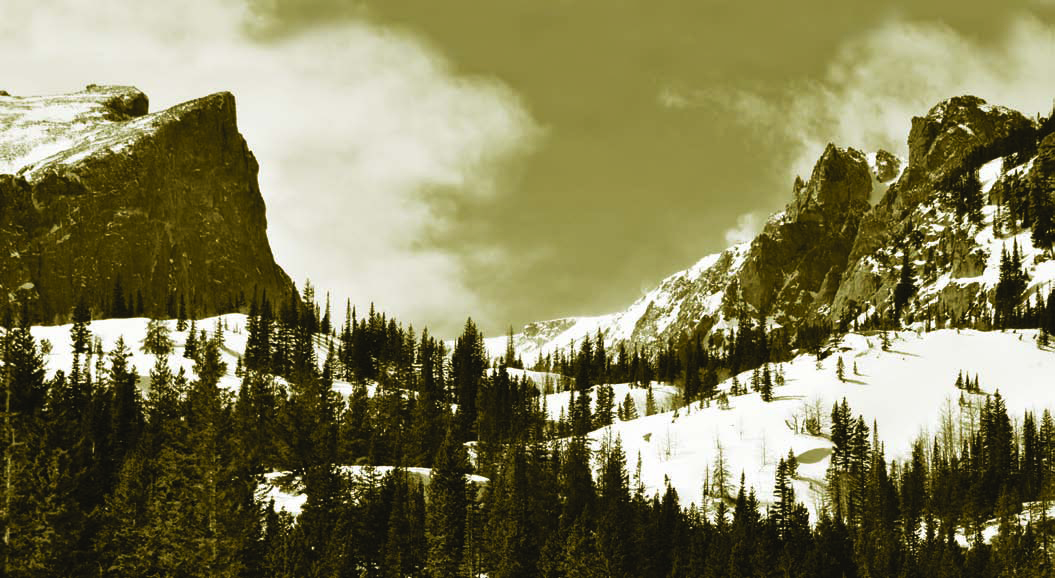
The Birth of the Rockies
New theory sheds light on the range's creation
Wyoming. As the oceanic slab slipped underneath the Wyoming section, called the Wyoming craton, friction between the underlying slab and craton sucked part of the Southern Wyoming and Colorado downwards to form a basin, Jones said.
This basin in which Pierre Shale built up, amplified mountain-building forces far inland and forced the formation of the Rockies, he said. "A huge basin develops and all of a sudden these mountains come rocketing out of it," Jones said. "We end up with the counter-intuitive visage of mountains rising up out of a hole."
The hypothesis, if confirmed, could not only unravel the geological origin of the Rockies, but could also illuminate the mechanisms that have led to mountain ranges worldwide. "We are adding a new collection of processes that can control how mountain belts develop that previously haven't really been appreciated," Jones said. "Considering these processes might explain other puzzling mountain belts."
precious metal deposits stretches across Colorado, and why a marine basin deepened in the states of Colorado and Wyoming just before the Rockies rose. The sediments of this marine basin are the Pierre Shale, a layer of shale lying along the Front Range of Colorado. "Pierre Shale has nasty tendencies to bow up people's basements," Jones said. "Why more than a mile of this stuff was dumped into this area has been puzzling."
Previously scientists believed that the oceanic plate subducting, or moving under, North America rose from the mantle to rub against the continent's bottom all the way from the ocean to Colorado. The theory was this action as it moved eastwards pushed the landmass into mountains much like a rug piles up underfoot, said Jones. But the hypothesis just doesn't explain the facts, he said. "That model predicted removal of material that is still found to lie underneath California and Arizona," he said. "That in and of itself was unsatisfying."
The new model hinges on an unusually thick lithosphere—the stiff part of the earth's surface that make up the tectonic plates—under
By Jane Palmer and Kristin Bjornsen
Just how the Rocky Mountains formed in Colorado has always puzzled scientists. Some 1,000 kilometers (600 miles) inland and far removed from the nearest tectonic plate, the only comparable inland mountain range is the Himalaya, which scientists deduced were formed by the collision of the Indian plate with the Eurasian plate.
"But there really was no India slamming into North America," said CIRES Fellow Craig Jones. "So how the central Rockies have formed is an enigma."
Geologists have some understanding of how the southern and northern portions of the Rocky Mountain Range, one of the longest mountain chains on Earth, have formed, but have previous explanations of the creation of the mountain range in Colorado and New Mexico have proved problematic, Jones said.
Jones and his team; however, have proposed a new model that may give valuable insights into the longstanding riddle. Not only could their research explain the origin of the Rockies, it could also elucidate other geological phenomena: why a swath of gold, silver and other


